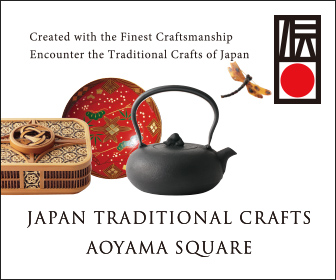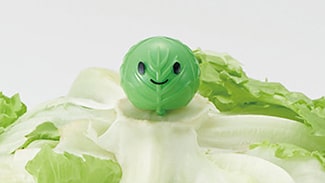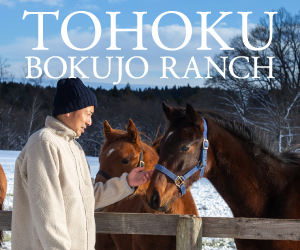JAPANESE FARE
JAPAN OFFERS A VERITABLE CORNUCOPIA OF FOOD
Japan is home to troves of high-quality ingredients used in local specialties across the country. Whether it is seafood, beef, vegetables, fruit, rice or sake, these specialties are famed for their fresh flavor and connection to local regions.
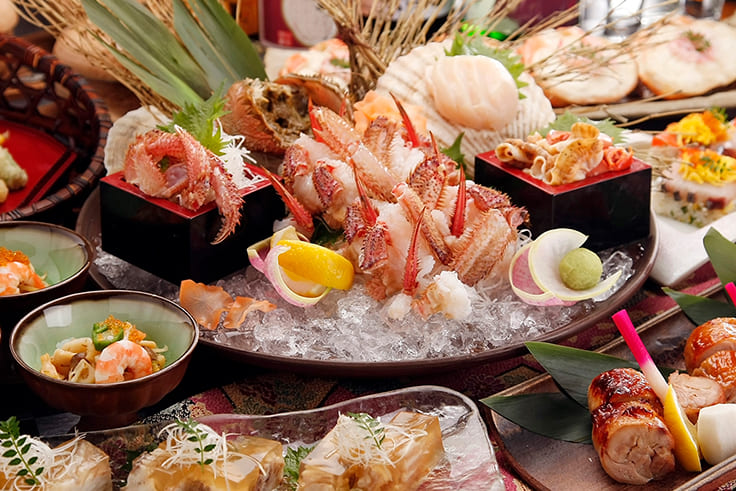
GETTY IMAGES
Crab is a staple of Japanese seafood. Although generally associated with the winter, varieties such as Hanasaki crab — which name is said to derive from the Hanasaki port area in Hokkaido where it is found — and horsehair crab, are also caught in summer. Horsehair crab is sought after for its delicious kani miso, a greenish tomalley paste found inside the crab, while Hanasaki crab features a sweet flavor and is commonly served boiled, grilled, or in miso soup.
Scallops are another popular seafood item used in Japanese dishes. Like crab, scallops are an ingredient commonly associated with winter, but they are actually also harvested through the summer. Scallops are a versatile ingredient served in a wide range of styles, including sashimi, sushi, and sauteed in butter and meuniere. Scallops are one of Japan’s biggest seafood exports, and varieties produced in Hokkaido and Aomori are acclaimed for their high quality.
In terms of beef, wagyu has garnered a worldwide reputation for its tender meat and rich flavor. Beef labeled as wagyu comes from four domestic breeds — Japanese brown, black, shorthorn and polled — as well as their interbred hybrids. Most wagyu is of the Japanese black variety, the meat of which features fat entwined in an irregular mesh pattern. Other breeds have their own unique qualities. Japanese brown, for example, is characterized by a rich flavor and delectable balance of flesh and fat, while Japanese polled has an exquisite taste and is low in fat.

GETTY IMAGES
Among Japan’s hundreds of wagyu varieties, some luxury brands have become global household names. These varieties of meat, which are commonly branded with the name of their production area, are subject to stringent production and quality standards. Some of the most well-known brands include Kobe beef from Hyogo Prefecture, Matsusaka beef from Mie Prefecture, Omi beef from Shiga Prefecture and Yonezawa beef from Yamagata Prefecture. These varieties are served as sirloin, hamburger steaks and other dishes at restaurants across Japan.
In addition to seafood and meat, Japanese dishes also incorporate many traditional vegetables deeply rooted in local culinary culture. Among these are kyō-yasai, traditional vegetables from the city of Kyoto and the wider Kyoto Prefecture. These vegetables, cultivated for hundreds of years in and around Japan’s former capital, are rich in nutrition and come in a variety of unique shapes and colors.
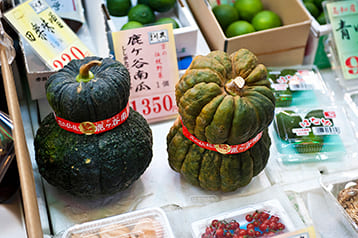
GETTY IMAGES
Examples of kyō-yasai include mizuna, a potherb mustard plant that can be pickled, boiled, dried or eaten raw in salads, and which is characterized by its feathery leaves and white leafstalks, as well as shishigatani kabocha, a traditional Japanese pumpkin with a lightly seasoned flavor. Other examples include kamo-nasu, big and round eggplants with a sweet taste and crunchy texture.
These traditional vegetables can be enjoyed at restaurants around Kyoto, which, due to its status as a religious center, has cultivated an array of unique vegetarian dishes. Some restaurants even incorporate these local vegetables into French and Italian dishes.
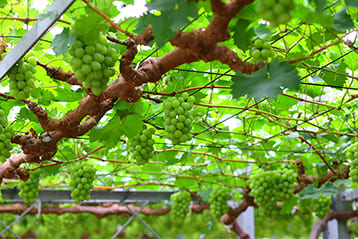
GETTY IMAGES

GETTY IMAGES
To the west of Kyoto is another prefecture known for its agricultural produce. Grape cultivation started in Okayama Prefecture more than 130 yeas ago and it has become a major area for grape production. Local grape producers cultivate many varieties of the fruit, from new pione — juicy grapes known for their rich aroma — to aurora black — a seedless variety with a sweet flavor— and muscat of Alexandria — a premium variety cultivated in glass greenhouses with an exquisite fragrance. The region’s delicious grapes attract people from around the country, who come to learn about the cultivation techniques of local farmers.
Okayama is also known for its peaches, which are a central motif in the tale of Momotaro, one of Japan’s most famous folk tales. The region’s peaches, as well as the grapes, top fruit parfaits sold at sightseeing spots in the prefecture.
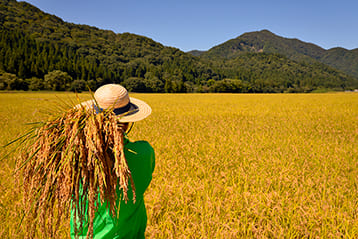
GETTY IMAGES
Rounding out this selection of culinary highlights is Japan’s main staple, rice. Among the country’s many brands is Koshihikari rice cultivated in Uonuma, Niigata Prefecture. It features a fluffy, chewy texture perfect for sushi and rice balls.



